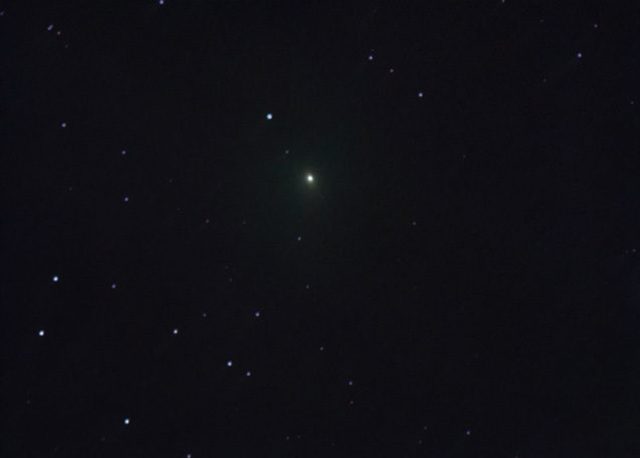
One thing I’ve found out with using electronically assisted methods to view dim objects in bad LP conditions is this: Live stacking generally improves things, but only at first. If you want something as dim as Comet 41P to show any more than just the inner coma, you have to stack with lots more subs using more advanced stacking methods than just average and additive.
So, I shot 103 subs-images, along with 30 darks and about 30 bias images for this object. I brought them into IRIS and used only the first 60 because that is all I could get to align. The usual methods of aligning based on the drift per hour in x and y coordinates doesn’t work if the sub-images are not timestamped. This is another deficiency in the low-end capture and stacking program, RisingSky (ToupSky.) Not sure if SharpCap has the same issues.

Anyway, at least I was able to obtain a basic image and considering the conditions, it is not too bad. Compare this to my previous effort with the Aptina AR0130 sensor. This would probably work lots better at a dark sky site. But, I don’t know if I would waste time on shooting with the RT224 when I could use the Canon T3, which is more sensitive when it comes to comets and captures a much larger field of view.
